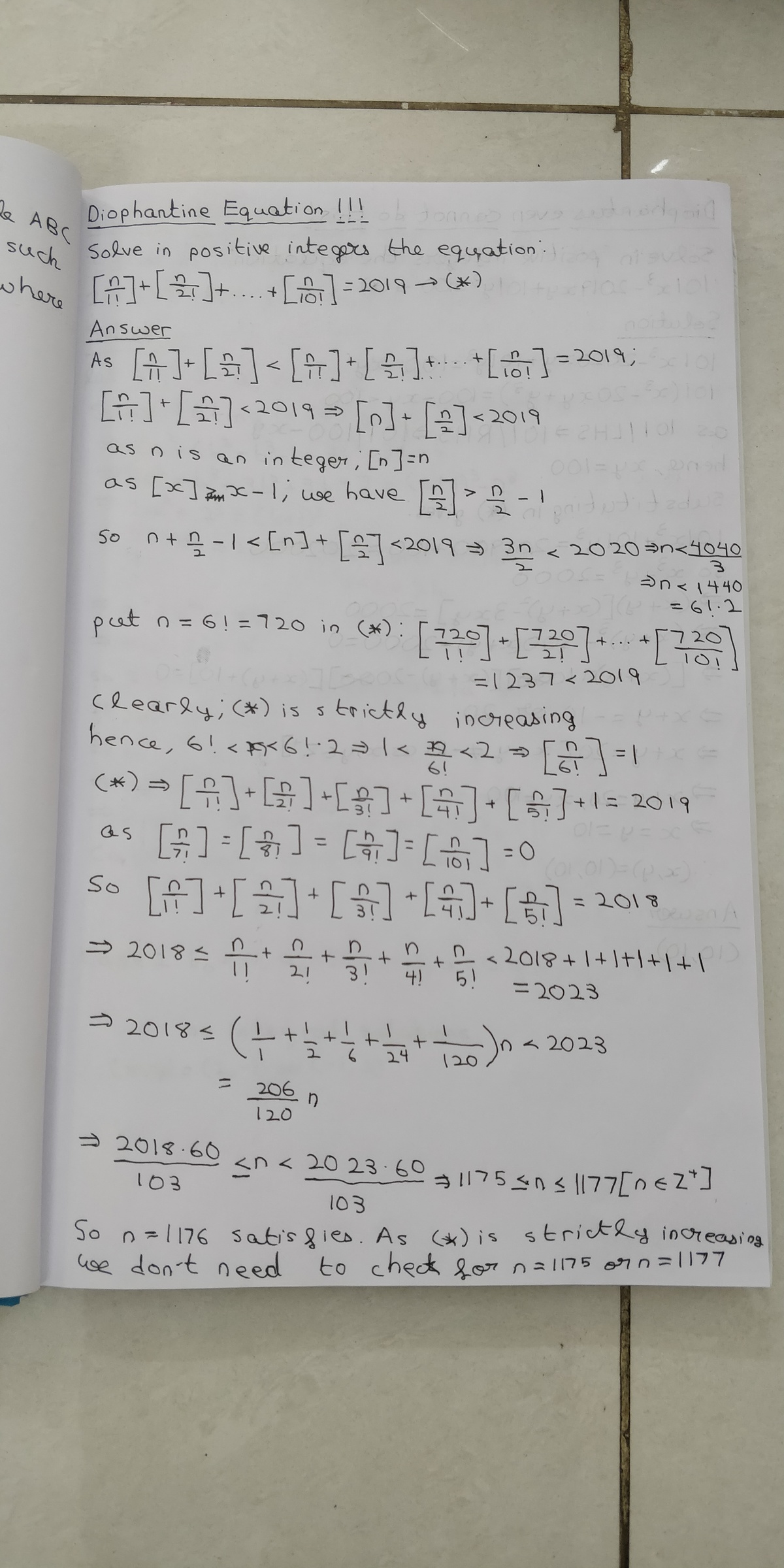Floor Function-1
⌊ 1 ! n ⌋ + ⌊ 2 ! n ⌋ + ⌊ 3 ! n ⌋ + ⋯ + ⌊ 1 0 ! n ⌋ = 2 0 1 9
Find the sum of all integer n satisfying the equation above.
Notation: ⌊ ⋅ ⌋ denotes the floor function .
The answer is 1176.
This section requires Javascript.
You are seeing this because something didn't load right. We suggest you, (a) try
refreshing the page, (b) enabling javascript if it is disabled on your browser and,
finally, (c)
loading the
non-javascript version of this page
. We're sorry about the hassle.
2 solutions
Sir, i want to know what's the latex code for the floor function of fraction. I am in trouble. Please reply fast
Log in to reply
Use \left and \right to ensure the ensure the size of brackets including floor function fit. For example \left( \left( \dfrac 12 \right)^\frac 12 \right) ( ( 2 1 ) 2 1 ) . Similarly, \left \lceil \left \lfloor \dfrac 12 \right \rfloor ^\frac 12 \right \rceil ⌈ ⌊ 2 1 ⌋ 2 1 ⌉ .

Given that k = 1 ∑ 1 0 ⌊ k ! n ⌋ = 2 0 1 9 , we can estimate n ≈ e − 1 2 0 1 9 ≈ 1 1 7 5 . 0 1 1 . Obviously n ≥ 1 1 7 6 . Since 7 ! = 5 0 4 0 , we need only consider k from 1 to 6 , because ⌊ k ! n ⌋ = 0 for k ≥ 7 .
k = 1 ∑ 6 ⌊ k ! 1 1 7 6 ⌋ = ⌊ 1 1 1 7 6 ⌋ + ⌊ 2 1 1 7 6 ⌋ + ⌊ 6 1 1 7 6 ⌋ + ⌊ 2 4 1 1 7 6 ⌋ + ⌊ 1 2 0 1 1 7 6 ⌋ + ⌊ 7 2 0 1 1 7 6 ⌋ = 1 1 7 6 + 5 8 8 + 1 9 6 + 4 9 + 9 + 1 = 2 0 1 9
If n = 1 1 7 7 , the first term will be 1 1 7 7 and the sum will be 2 0 2 0 . Therefore n = 1 1 7 6 is the only solution and the sum of n is 1 1 7 6 .